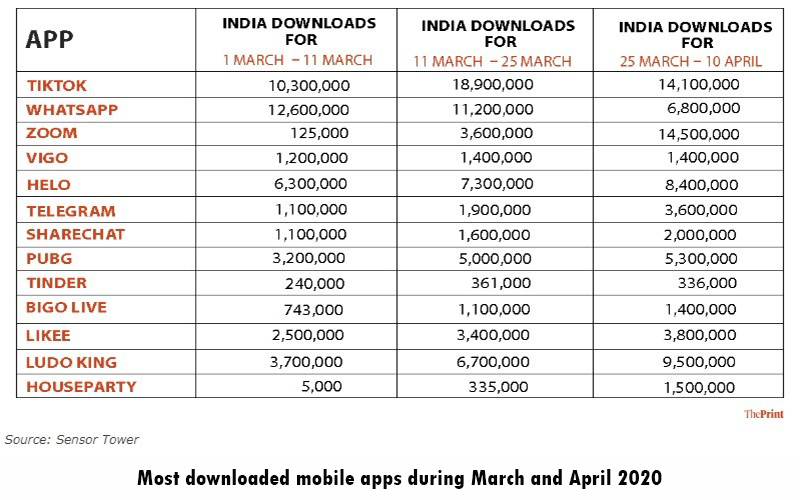Amalendu is an experience design specialist with 18+ years of experience, most of those years he spent exclusively as a User Experience Designer (UX Designer) with major IT agencies and E-Commerce portals. He has worked on a variety of projects including financial and forex web and mobile apps, e-commerce, brand and marketing sites, financial dashboards, user-generated content, social networking, and on-demand mobile applications for various clients. Pepperfry.Com, Funds-SP for S&P500, Porsche, Walmart are some of the clients he has worked with.
In these looming times of lockdown distress, the one apparent hope people have is their smartphone. The once luxury or entertaining device smartphone is today a lifeline to people. Today, the thin line between apprehension and comfort has been crossed; and consumers have come to the big and fascinating world of utilising mobile apps extensively. Call it the situational need, but once you are hooked to a mobile app and its comfort and utility, there is a grim chance of withdrawing.
While some mobile apps are default to all the smartphone, the ones that you will download are primarily for utility and secondarily for entertainment. Mobile Apps that have been existent for some time have been accepted under the crucial challenges of time and accessibility.
When demonetisation was announced in India back in 2017, the entire Indian fraternity was taken by a storm. Cashless transactions were the only option, as the old currency was void. As stated by the Times of India, ‘the government’s move of demonetisation has driven people to go cashless and depend on mobile apps.’
The BHIM App is another indigenous app developed to help the cashless crises of demonetisation. The App was launched by the Prime Minister of India, two months after the demonetisation in Nov 2017. Players like Paytm, a mobile wallet company, had a crucial role to play during the cashless times of demonetisation. Paytm is India’s largest mobile payment wallet company with more than 100 million users and more than 2 million transactions per day. Within two days of the Indian Government’s move to demonetise, the App saw a considerable surge of 3 times the app download, as well as five times offline transactions moving to online. According to www.moneycontrol.com, the company saw a substantial user base increase from 140 million in October 2016 to 270 million in November 2017. Additionally, the company’s merchant base had swollen to 5 million from 8,00,000 in 2016.
Today, PayTM App sits comfortably in your smartphone as a crucial money transaction app. The transactions being carried out by merely a couple of clicks. Apps are built around our comfort, but we have to adapt them and utilise. Many brilliant utility-based apps come to promise convenience and time management. At the same time, they can track and document details for easy use in the recurrent transactions.
In recent times of COVID-19, the corporate culture has shifted temporarily where video chats drive the business operating modules. The need of the time is communicating and keeping business going. The social distancing norms and stay safe indoor slogans have made us rely to a great extent on video calling apps. www.statista.com highlights the whopping trend of how people have shifted to the video calling domain to keep businesses going. Zoom calls lead the charts with Skype following suit. Skype, however, still leads with the number of daily active users. Video calls have made business convenient. Not only saving time but essentially meeting the current need to communicate. Video chats are a window to the world in these grim times.

It is not a fancy that we are facing a second historic moment in the last three years, demonetisation and now Covid-19. In these difficult times of low accessibility of cash and physical operations, mobile apps have come to support us in every possible way. Grocery, electronics, books, clothes, cakes, flowers, medicines, and hardware, you name anything, and the mobile apps can source it for you. On the forefront of COVID-19, gaming apps and tik tok have experienced the maximum downloads.

Arogya Setu App
The Arogya Setu App has considerably crossed a download of 50 Million and is an indigenous app to India. The Arogya Setu App was launched by the Ministry of Health to track and update on the COVID – 19 situations efficiently. The App received a whopping download post Prime Minister Narendra Modi’s mention about it in his Nationwide speech on April’14.

www.yourstory.com states, “New app downloads on Android and iOS stood at 22 billion and nine billion respectively. Non-gaming apps accounted for 55 per cent of overall downloads on Google Play Store, and 65 per cent on Apple App Store.” The App industry is competitive and preference driven. Yet, the usability factor and technical support is the prime element that drives downloads.
The next important element that drives consumers towards downloads is value-added services. The current COVID-19 situation has rendered people to their homes, accessibility is limited and, in such times, how mobile app companies can come to make a difference? Technology supported by the human factor goes a long mile in establishing relations. Mobile app companies like Swiggy and Zomato have initiated the deliveries with preset information of the chef’s body temperature and that of the delivery person.
www.Livemint.com, in one of its latest news, brings forth the essential cross-brand associations to service consumers. Nivea India, in a bid to service its clients with essential hygiene products during the COVID-19 lockdown situation, has tied-up with Zomato and Swiggy for deliveries within 60 to 90 minutes within a city. Domino’s Pizza and ITC have also associated with delivering ITC’s essential products like wheat flour and spices.
Mobile Apps companies are building convenient experiences around health, entertainment, pharmacy, and convenience items. Brands are bringing an advantage to their consumers by acting as extensions to their needs. The effort is human and back-end technology. While situations will not remain the same, and consumers might soon return to retail shopping; mobile apps will still rule the game with the convenience and easy access they bring to the trade.
(Disclaimer: The apps mentioned here, I am neither promoting them nor attached with them anyway nor designed any of them, I noticed the usage of these in recent past and using their names so the reader can easily understand – Amalendu Hajraa)


